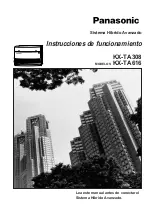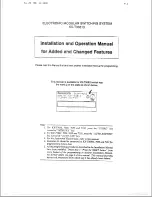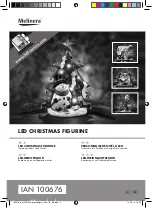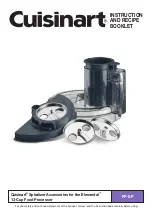
Operation
Before Operation
Before Operation Safety
General Safety
•
Never allow children or untrained people to
operate or service the machine. Local regulations
may restrict the age of the operator. The owner
is responsible for training all operators and
mechanics.
•
Become familiar with the safe operation of the
equipment, operator controls, and safety signs.
•
Park the machine on a level surface; engage
the parking brake, lower the attachments to the
ground, shut off the engine, remove the key, and
wait for all movement to stop before leaving the
machine.
•
Know how to stop the machine and engine quickly.
•
Check that operator-presence controls, safety
switches, and shields are attached and functioning
properly. Do not operate the machine unless they
are functioning properly.
•
Before operating, always inspect the machine
to ensure that the components and hardware
are in good working condition. Replace worn or
damaged components and hardware.
Fuel Safety
•
Fuel is extremely flammable and highly explosive.
A fire or explosion from fuel can burn you and
others and can damage property.
– To prevent a static charge from igniting the fuel,
place the container and/or machine directly on
the ground before filling, not in a vehicle or on
an object.
– Fill the fuel tank outdoors, in an open area,
when the engine is cold. Wipe up any fuel that
spills.
– Do not handle fuel when smoking or around an
open flame or sparks.
– Do not remove the fuel cap or add fuel to the
tank while the engine is running or hot.
– If you spill fuel, do not attempt to start the
engine. Avoid creating a source of ignition until
the fuel vapors have dissipated.
– Store fuel in an approved container and keep
it out of the reach of children.
•
Fuel is harmful or fatal if swallowed. Long-term
exposure to vapors can cause serious injury and
illness.
– Avoid prolonged breathing of vapors.
– Keep your hands and face away from the
nozzle and the fuel-tank opening.
– Keep fuel away from your eyes and skin.
•
Do not store the machine or fuel container where
there is an open flame, spark, or pilot light, such
as on a water heater or on other appliances.
•
Do not fill containers inside a vehicle or on a truck
or trailer bed with a plastic liner. Always place
containers on the ground, away from your vehicle
before filling.
•
Remove the equipment from the truck or trailer
and refuel it while it is on the ground. If this is not
possible, then refuel from a portable container
rather than a fuel-dispenser nozzle.
•
Do not operate the machine without the entire
exhaust system in place and in proper working
condition.
•
Keep the fuel-dispenser nozzle in contact with
the rim of the fuel tank or container opening at
all times until fueling is complete. Do not use a
nozzle lock-open device.
•
If you spill fuel on your clothing, change your
clothing immediately. Wipe up any fuel that spills.
•
Never overfill the fuel tank. Replace the fuel cap
and tighten it securely.
Fueling the Machine
Fuel Specification
Petroleum
fuel
Use unleaded gasoline with an octane rating of 87
or higher ((R+M)/2 rating method).
Use an unleaded-gasoline blend with up to 10%
ethanol (gasohol) or 15% MTBE (methyl tertiary
butyl ether) by volume is acceptable. Ethanol and
MTBE are not the same.
Ethanol
blended
fuel
Gasoline with 15% ethanol (E15) by volume is
not approved for use. Never use gasoline that
contains more than 10% ethanol by volume, such
as E15 (contains 15% ethanol), E20 (contains
20% ethanol), or E85 (contains up to 85%
ethanol). Using unapproved gasoline may cause
performance problems and/or engine damage
which may not be covered under warranty.
Important:
For best results, use only clean, fresh
fuel (less than 30 days old).
•
Do not use gasoline containing methanol.
•
Do not store fuel either in the fuel tank or fuel
containers over the winter unless you use a fuel
stabilizer.
•
Do not add oil to gasoline.
19
Содержание 08839
Страница 29: ...9 Adjust the tilt of the multi tool carrier as needed Figure 39 g359127 Figure 39 29...
Страница 62: ...Notes...
















































